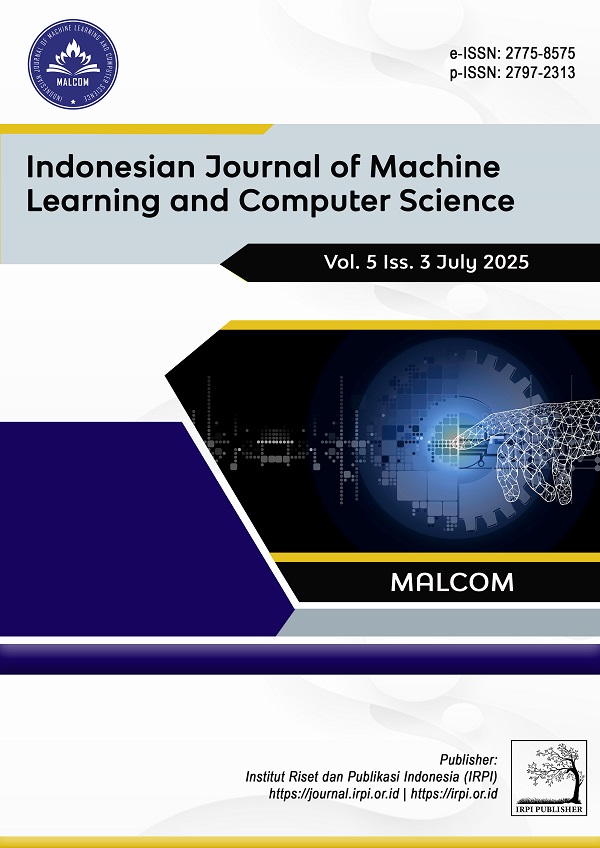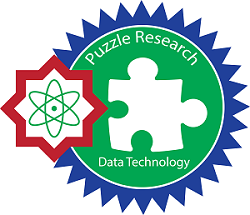Smart Prescription Reader: Enhancing Accuracy in Medical Prescriptions
DOI:
https://doi.org/10.57152/malcom.v5i3.1934Keywords:
Convolutional Neural Network (CNN), Machine Learning, MobileNet, Prescription ImagesAbstract
Reading a doctor's handwritten prescription is a challenge faced by most patients and some pharmacists, which in some cases can lead to negative consequences due to misinterpretation of the prescription. The "Doctor's Handwritten Prescription BD Dataset" on Kaggle contains segmented images of handwritten prescription words from BD (Bangladesh) doctors. This dataset, intended for machine learning applications, includes 4,680 individual words segmented from prescription images. This study introduces a Handwriting Recognition System using Convolutional Neural Network (CNN) developed to identify text in prescription images written by doctors and convert the cursive handwriting into readable text. Two models were evaluated in this study: CNN and MobileNet. Based on the experiments, MobileNet showed better results compared to CNN alone. From the dataset of 4,680 words, 3,120 were used for training, 780 for testing, and 780 for validation. The study achieved a training accuracy of 97%, a testing accuracy of 88%, and a validation accuracy of 83%. The developed model was successfully implemented in a web application
Downloads
References
N. Alrabadi et al., “Medication errors: a focus on nursing practice,” Journal of Pharmaceutical Health Services Research, vol. 12, no. 1, pp. 78–86, Feb. 2021, doi: 10.1093/jphsr/rmaa025.
L. C., “New Questions on the Road to Safer Health Care,” Pediatrics, doi: 10.1542/peds.2013-0647.
H. Carole, H. M., E. S. Susan, and D. U. Beth, “Who killed patient safety?,” J Patient Saf Risk Manag, doi: 10.1177/25160435221077778.
R. Mannion and J. Braithwaite, “False Dawns and New Horizons in Patient Safety Research and Practice,” Int J Health Policy Manag, vol. 6, no. 12, pp. 685–689, doi: 10.15171/ijhpm.2017.115.
L. J. Donaldson, C. Lemer, D. J. Noble, F. Greaves, and M. Fletcher, “Finding the Achilles’ heel in healthcare,” J R Soc Med, vol. 103, no. 2, pp. 40–41, doi: 10.1258/jrsm.2009.090417.
H. H. Louise, J. Judith, W. Ian, T. A., and B. O. Daryl, “Healthcare Staff Wellbeing, Burnout, and Patient Safety: A Systematic Review,” PLoS One, doi: 10.1371/journal.pone.0159015.
G. F. Cavell and D. Mandaliya, “Magnitude of error: a review of wrong dose medication incidents reported to a UK hospital voluntary incident reporting system,” European Journal of Hospital Pharmacy, vol. 28, no. 5, pp. 260–265, Sep. 2021, doi: 10.1136/ejhpharm-2019-001987.
L. L., “A systems analysis approach to medical error.,” J Eval Clin Pract, doi: 10.1046/J.1365-2753.1997.00006.X.
G. A. James, “A systems approach to preventing adverse drug events.,” Stud Health Technol Inform.
C. Michelle et al., “Influence of a systems-based approach to prescribing errors in a pedia tric resident clinic.,” Acad Pediatr, doi: 10.1016/j.acap.2014.03.018.
S. Mohsin-Shaikh et al., “The impact of electronic prescribing systems on healthcare professionals’ working practices in the hospital setting: A systematic review and narrative synthesis,” BMC Health Serv Res, vol. 19, no. 1, pp. 1–8, 2019, doi: 10.1186/s12913-019-4554-7.
J. Memon, M. Sami, R. A. Khan, and M. Uddin, “Handwritten Optical Character Recognition (OCR): A Comprehensive Syste matic Literature Review (SLR),” IEEE Access, vol. 8, pp. 142642–142668, doi: 10.1109/access.2020.3012542.
S. Karthikeyan, A. G. S. de Herrera, F. Doctor, and A. Mirza, “An OCR Post-Correction Approach Using Deep Learning for Processing Med ical Reports,” IEEE Transactions on Circuits and Systems for Video Technology, vol. 32, no. 5, pp. 2574–2581, doi: 10.1109/tcsvt.2021.3087641.
L. V Rasmussen, P. L. Peissig, C. A. McCarty, and J. Starren, “Development of an optical character recognition pipeline for handwritt en form fields from an electronic health record,” Journal of the American Medical Informatics Association, vol. 19, no. e1, pp. e90–e95, doi: 10.1136/amiajnl-2011-000182.
N. Gal-Nadasan, V. Stoicu-Tivadar, E. Gal-Nadasan, and A. R. Dinu, “Robotic Process Automation Based Data Extraction from Handwritten Medi cal Forms,” in Studies in Health Technology and Informatics, IOS Press, 2023. doi: 10.3233/shti230741.
E. Coiera and S. Liu, “Evidence synthesis, digital scribes, and translational challenges for artificial intelligence in healthcare,” Cell Rep Med, vol. 3, no. 12, p. 100860, doi: 10.1016/j.xcrm.2022.100860.
L. V. Rasmussen, P. L. Peissig, C. A. McCarty, and J. Starren, “Development of an optical character recognition pipeline for handwritten form fields from an electronic health record,” Journal of the American Medical Informatics Association, vol. 19, no. e1, pp. e90–e95, Jun. 2012, doi: 10.1136/amiajnl-2011-000182.
A. G. Howard et al., “MobileNets: Efficient Convolutional Neural Networks for Mobile Vision Applications,” 2017, [Online]. Available: http://arxiv.org/abs/1704.04861
Downloads
Published
How to Cite
Issue
Section
License
Copyright (c) 2025 Ragil Yulianto

This work is licensed under a Creative Commons Attribution-ShareAlike 4.0 International License.
Copyright © by Author; Published by Institut Riset dan Publikasi Indonesia (IRPI)
This Indonesian Journal of Machine Learning and Computer Science is licensed under a Creative Commons Attribution-ShareAlike 4.0 International License.




















